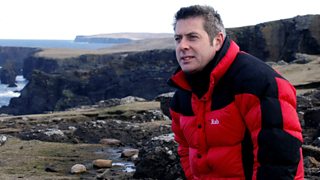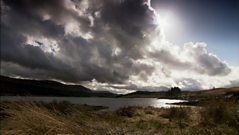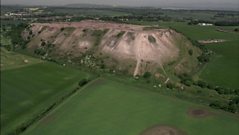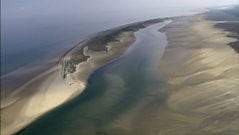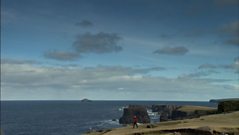
Ben Nevis
150 years ago the weather and climate was one huge unknown - records were either patchy or non-existent. Into this scientific void stepped a group of intrepid Victorian meteorologists.
150 years ago the weather and climate was one huge unknown - records were either patchy or non-existent. Into this scientific void stepped a group of intrepid Victorian meteorologists. In the summers of 1881 and 1882, a man named Clement Wragge walked daily to the top of Ben Nevis to record the weather at the summit simultaneously with observations made in Fort William, by his wife. His actions were part scientific and part protest as scientists were pressing for an observation station to be built on Nevis. The money was eventually raised and the station opened in 1883. Wragge later became famous for his idea to give names to hurricanes, but the man who made the greatest advances was Alexander Buchan, Secretary of the Scottish Meteorological Society. In 1863, Buchan constructed a series of 18 charts through which he could follow the development and movement of weather systems across Europe. As these charts also included observations of wind speed and direction, he was further able to formulate the simple and fundamental rules that winds blow anti-clockwise around an area of low pressure in the Northern Hemisphere, and that wind speed is proportional to the closeness of the isobars. Buchan was the first to attempt to forecast future weather conditions, and were published in his “Handy Book of Meteorology” in 1868.
The book is testimony to the days of hard-graft; when we had to be there to write the data down and to the scientists who established a tradition of basic data collection. These early meteorologists not only gifted future generations a baseline, but a way of discovering that the globe was warming - and by how much.
Duration:
This clip is from
More clips from The Climate
-
![]()
The Lochs of Galloway Forest
Duration: 02:08
-
![]()
Bathgate, West Lothian
Duration: 02:49
-
![]()
Culbin Sands (The Little Ice Age)
Duration: 04:23
-
![]()
The Grind Of Navir (Shetland)
Duration: 03:13
More clips from Making Scotland's Landscape
-
![]()
The Grind Of Navir (Shetland)—The Climate
Duration: 03:13
-
![]()
Culbin Sands (The Little Ice Age)—The Climate
Duration: 04:23
-
![]()
Bathgate, West Lothian—The Climate
Duration: 02:49
-
![]()
The Lochs of Galloway Forest—The Climate
Duration: 02:08
